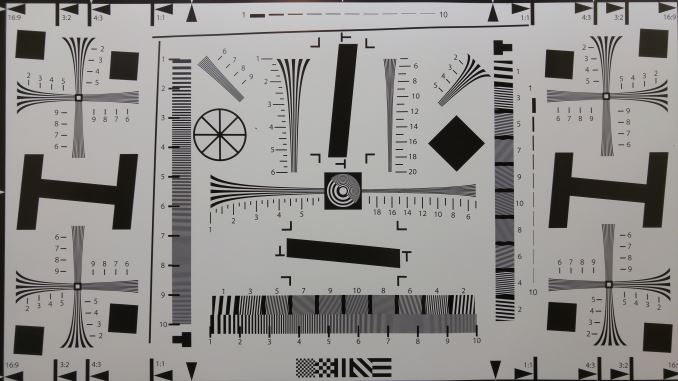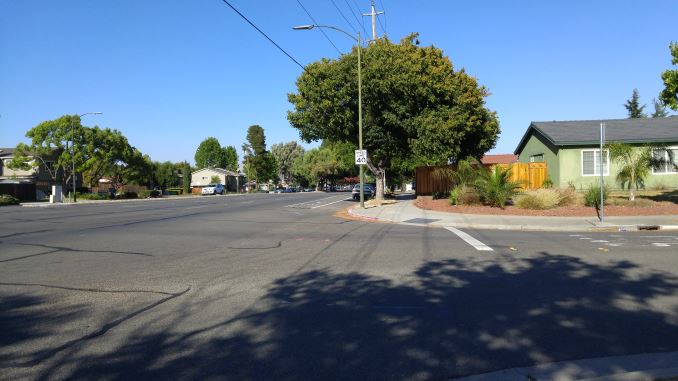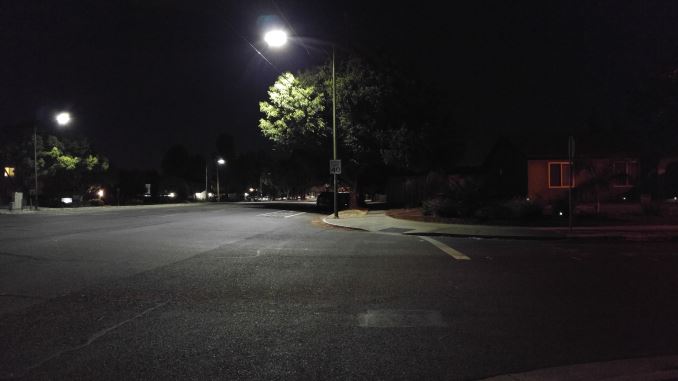The LG G4 Review
by Joshua Ho on July 30, 2015 10:00 AM EST- Posted in
- Smartphones
- Qualcomm
- LG
- Mobile
- Snapdragon 808
- LG G4
Still Image Performance
Now that we’ve been able to discuss the basic specs of the camera and the user experience of taking photos, we can begin to talk about the image quality of the camera system. This is an incredibly complex field to say the least, as there are many parts of the chain that have a significant impact on overall quality. In order to test this, we use relative photo comparisons which allow for some level of objective comparison in terms of optical distortions, MTF, and other factors that influence image quality. I’m still not satisfied with the state of our testing suite here, but for rough comparisons it should serve well.
In our ISO test chart, the G4 effectively has no problem resolving anything on the test chart, but the contrast between lines can get rather low by the time we reach the 20 mark on this graph. However, resolution at the center isn't the only part that matters, but rather resolution at the edges. In that regard it appears that the G4 has some issues with defocus and noise at the edges that is slightly worse than the Galaxy S6, but it's definitely possible that we're just looking at differences in post-processing as the haloing is definitely slightly more obvious on the G4 around all the high-contrast edges in this photo.
Moving past our controlled lighting tests, we use some real-world estimations to try and judge more than pure resolution. In our daytime landscape tests, the LG G4 is roughly equivalent to the Galaxy S6, but textures seem to have visibly lower resolution. Given the even more aggressive sharpening on the LG G4 compared to the GS6, it’s likely that we’re seeing differences in post-processing and possibly differences in optics as well. It’s worth noting here that the OIS has a tendency to drift even in situations that don’t appear to have any hand shake present, so this can also affect the sharpness of photos in daytime.
At any rate, resolution is effectively comparable to the LG G3, which is probably indicative that we’re mostly limited by the optics here, and that decreasing pixel size much further won’t really help with increasing resolution. HDR is pretty much similar in terms of quality to the Galaxy S6, but the use of multiple image combination affects the shot to shot latency as there’s additional processing time compared to the Galaxy S6’s instant HDR which affects the user experience. I should note that RAW output is effectively useless here as well, as there’s basically no lens or sensor profile so the colors of the RAW photo look rather off, in conjunction with vignetting and other distortions that are difficult to correct for.
In low light, the LG G4 is arguably far superior to the Galaxy S6 in terms of quality. Looking at the test images, a number of issues stand out in the Galaxy S6 that are resolved in the LG G4. The first is that the processing avoids artificially increasing exposure well past what the sensor has recorded, so there’s no purple hue in black areas like the sky and the right side of the image. The other significant advantage here is that LG’s noise reduction algorithms are much more balanced, favoring preservation of detail over smoothing out luminance noise. The speed limit sign is significantly more legible, and in general edges remain much sharper on the G4, and textures retain more detail than on the Galaxy S6. Given that detail seems to be a bit worse in daytime, it seems fair to say that LG has simply adopted better post-processing for low light photos, so these comparisons are definitely subject to change as OEMs adjust post-processing with various OTAs.
Overall, I’m actually quite impressed with what LG has done here. The camera UI is easily one of the best I’ve seen in any smartphone, and the camera is definitely much faster than the one on the LG G3. Shot to shot latency isn’t quite fast enough to feel instant, but it’s at least competitive with other devices on the market. Image quality is also competitive with the Galaxy S6 in the day, and noticeably better at night. Combined with the manual controls, I would argue that the LG G4 is a better camera than the Galaxy S6 and even the iPhone 6 Plus, although I would prefer a 4:3 sensor and a stronger focus on reducing optical distortion over chasing wider field of view and wider apertures for future iterations of the device.































84 Comments
View All Comments
djc208 - Thursday, July 30, 2015 - link
I had the original Optimus G, and it was a great phone hardware wise, but my biggest problem with LG has been their software support. It's getting better but still miserable. They move to new phones so fast that most are barely supported for software for a year. Meanwhile I think Samsung has done a better job of updating and supporting older phones, plus they're so popular the ROMs are more plentiful and well supported. I just couldn't get over the Samsung bloatware, but if you can, they're so close it would probably tip me toward the Samsung based on better software support long term.djw39 - Thursday, July 30, 2015 - link
For the software, if they would just allow for the notification toggles to be hidden by default and appear with a second swipe down, I think that would go a long way. Maybe also give us a normal lockscreen clock too.phoenix_rizzen - Thursday, July 30, 2015 - link
That's my biggest complaint with LG's UI: the lack of usable space on the notification drop-down. There's a scrollable row of quick-toggles, then the volume slide, then the brightness slider, then the shortcuts bar for their quick apps (or whatever they call them), and then, using the last inch of the screen, the actual notifications list!I've tried running the LG stock version of Android on my G2, and always get frustrated with it within a week. Tried the ported ROMs from the LG G3; same frustrations within a week. Even tried the latest ported ROM from the G4; didn't last more than 3 days.
The AOSP-based ROMs have some stability issues, and don't have access to all the camera features, but usability-wise, they are light-years ahead of LG. Even the minimalist ParanoidAndroid provides a better experience than LG, with BlissPop and AICP being even better.
ThisIsChrisKim - Thursday, July 30, 2015 - link
At least on the G4, you can disable all but the quick toggles row. That's how I have mine configured.cjb110 - Thursday, July 30, 2015 - link
As I bought one of these yesterday (once the Moto X was announced as 5.7"), this was a very interesting read. One of the other reviews mentioned that due to the thinness of the bezels its not that hard to hold, which I'd agree. I'd also say LG did a reasonable job on the OS side, most of the crap can be turned off (like taking the picture), and rest is useful (smart settings is a simple but capable 'automation' job. I have replaced the launcher with Google Now, mainly as LG's far left page didn't seem to really do anything useful. One thing I didn't see mentioned that their circle cases (with a watch'esq gap on the front) replace the back and Add wireless charging, BUT you can't get one of these cases in the leather.ZeDestructor - Thursday, July 30, 2015 - link
And still no Xperia Z* review :(piroroadkill - Thursday, July 30, 2015 - link
Heh, right? I'd /still/ buy a Z3 Compact over anything else.BMNify - Friday, July 31, 2015 - link
Sony does not send review samples to Anandtech, so you won't get Xperia reviews.ZeDestructor - Friday, July 31, 2015 - link
Maybe, but sometimes you have to pay up from your own pocket and buy your own review samples, or get a loaner device from somewhere. I mean, GSMarena gets samples, as does arstechnica, so I don't see why AT can't.Personally, if I were in the US, I'd actually happily have sent in my Xperia Z and Z2 when they were freshly released and new for review... Hell, I'd even do it now if there is interest, but nobody wants to see the review for a phone over a year old (nevermind that none of the new flagships bring any useful improvements over it...).
BMNify - Friday, July 31, 2015 - link
You cannot expect Anandtech to buy devices as they review loads of things in different digital/tech sectors often costing thousands of dollars, so they stick to the single site-wide policy of review samples which every major company sends them, only Sony does not send devices to Anandtech.It will be awesome if you can send new devices to Anandtech, i am sure they will appreciate it and even return after few weeks, hope you do send the next Sony xperia, specially the compact ones.